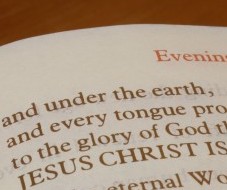A perfectly respectable reading of the whole Exodus story is the allegorical one. In this reading, the Egyptian army, its chariots and charioteers and even its horses, symbolize the forces of evil and sin. God loved the Israelites, who are God’s chosen people, and in a sense, you and me, so much that he rescued them from their abject slavery in Egypt, a slavery that we all have to the forces of sin. Anyone who has struggled with an addiction or any pattern of sin in their lives, can tell you how sinfulness is really its own kind of slavery. God leads his chosen people away from sin back to the Promised Land, the heaven he promises us all. On the way, the forces of evil are drowned in the abyss of the Red Sea, which symbolizes the abyss between this world of sin and the Promised Land of heaven.
I like this allegorical reading because we are all pretty well removed from the ancient history of the Israelites and the Egyptians. But the slavery that we all have to sin at one point or another in our lives is anything but ancient history. God intends a very real exodus for all his chosen people, and he continues to do the work of salvation in and for all of us every day. All of us who are sister and brother and mother to the Lord Jesus, all of his family, are too important to be left behind in slavery to sin.
All we have to do is follow the Lord through the desert of purification, through the abyss of whatever the Red Sea looks like for us, into the Promised Land. And it won’t be easy. If the desert doesn’t discourage us, the abyss will outright frighten us. But the thought of being back at the fleshpots of our Egypt of sin should easily be enough to keep us all on the journey to get where we’re supposed to be. We too might sing to the Lord for he is gloriously triumphant. The horse and chariot of our own sinfulness has been cast into the sea.
